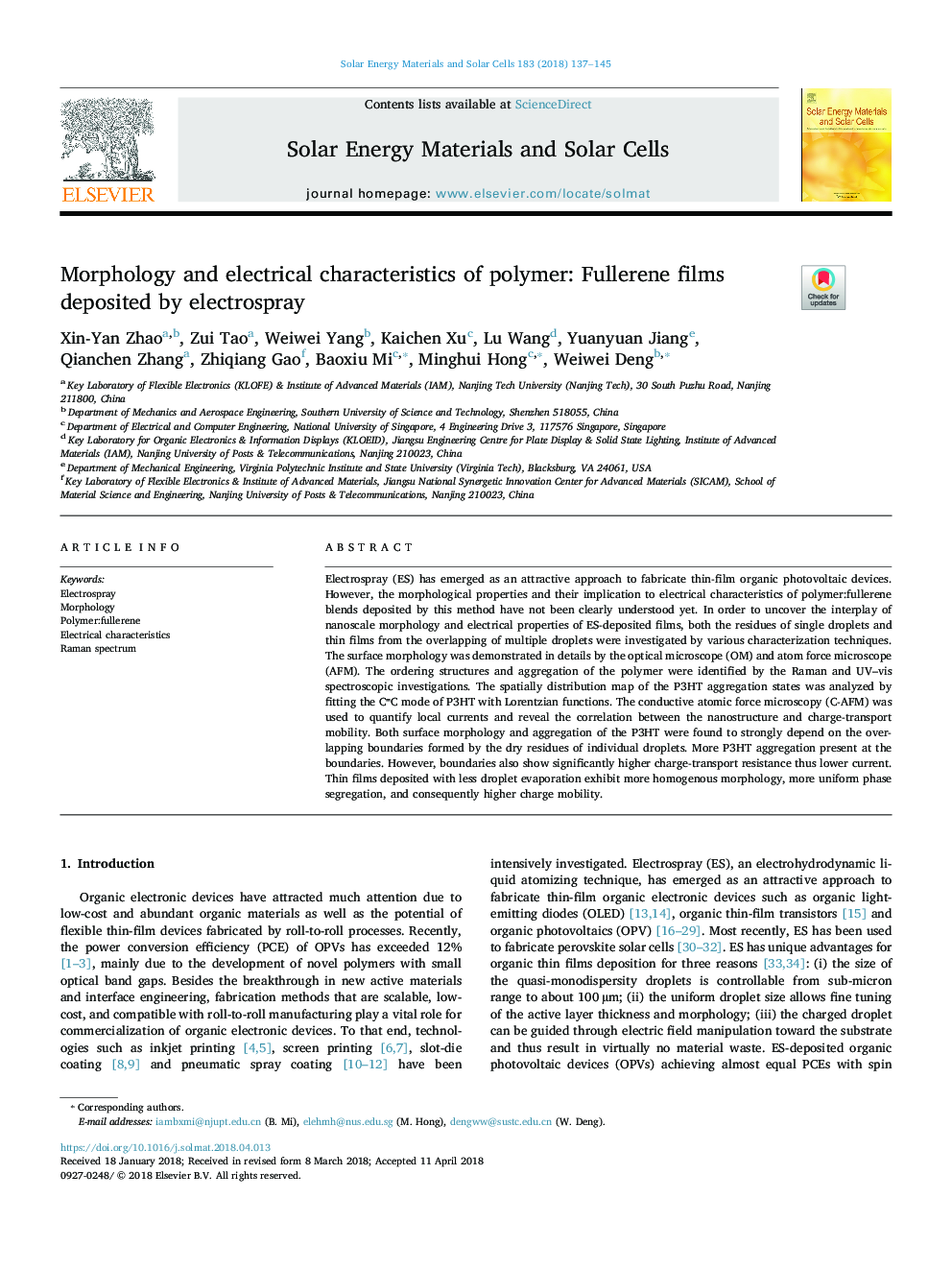| Article ID | Journal | Published Year | Pages | File Type |
|---|---|---|---|---|
| 6534083 | Solar Energy Materials and Solar Cells | 2018 | 9 Pages |
Abstract
Electrospray (ES) has emerged as an attractive approach to fabricate thin-film organic photovoltaic devices. However, the morphological properties and their implication to electrical characteristics of polymer:fullerene blends deposited by this method have not been clearly understood yet. In order to uncover the interplay of nanoscale morphology and electrical properties of ES-deposited films, both the residues of single droplets and thin films from the overlapping of multiple droplets were investigated by various characterization techniques. The surface morphology was demonstrated in details by the optical microscope (OM) and atom force microscope (AFM). The ordering structures and aggregation of the polymer were identified by the Raman and UV-vis spectroscopic investigations. The spatially distribution map of the P3HT aggregation states was analyzed by fitting the CËC mode of P3HT with Lorentzian functions. The conductive atomic force microscopy (C-AFM) was used to quantify local currents and reveal the correlation between the nanostructure and charge-transport mobility. Both surface morphology and aggregation of the P3HT were found to strongly depend on the overlapping boundaries formed by the dry residues of individual droplets. More P3HT aggregation present at the boundaries. However, boundaries also show significantly higher charge-transport resistance thus lower current. Thin films deposited with less droplet evaporation exhibit more homogenous morphology, more uniform phase segregation, and consequently higher charge mobility.
Related Topics
Physical Sciences and Engineering
Chemical Engineering
Catalysis
Authors
Xin-Yan Zhao, Zui Tao, Weiwei Yang, Kaichen Xu, Lu Wang, Yuanyuan Jiang, Qianchen Zhang, Zhiqiang Gao, Baoxiu Mi, Minghui Hong, Weiwei Deng,
